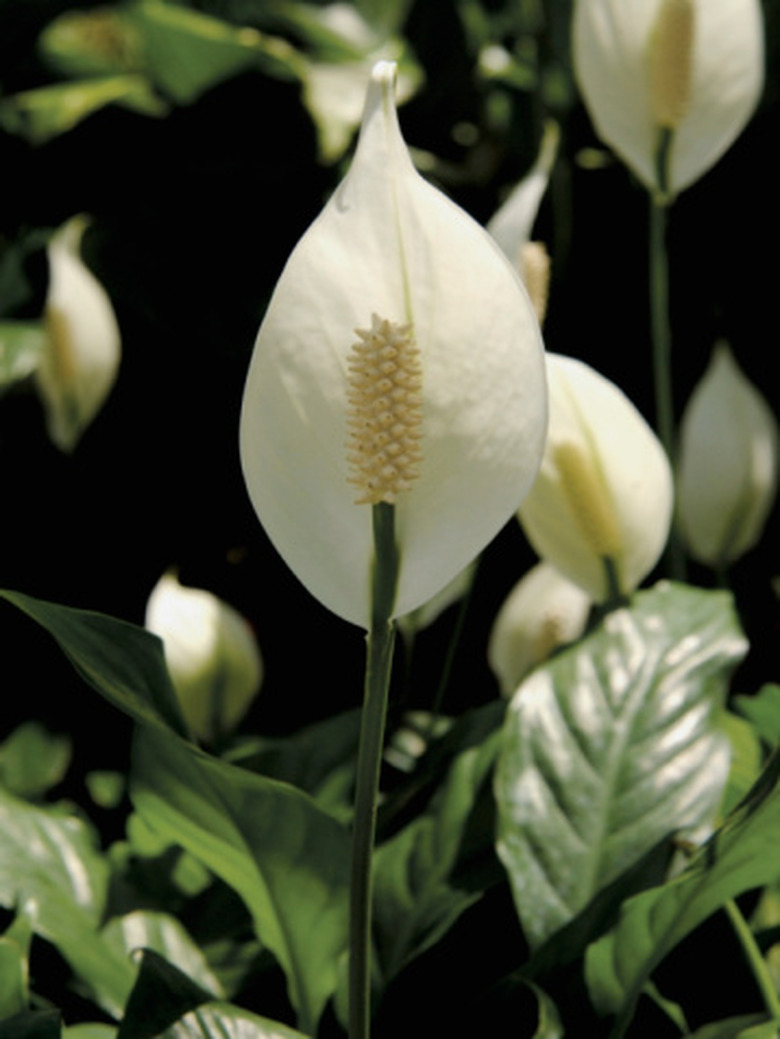Why Are My Peace Lilies Dying?
The peace lily, or spathiphyllum, tolerates low light and blooms if given enough indirect light. It also thrives on indoor temperatures. Their tolerant nature makes it difficult to understand why they sometimes die.
Dormancy
Temperatures in the 50s, drafts or heavy bloom can trigger dormancy in spathiphyllum that resembles a dying plant. Browning tips and drooping, dying leaves may last for one or two months. Plants will begin growing again if you keep them moist but not wet and place them in bright filtered light.
Extremes
Too much water or fertilizer leads to root rot, leaf collapse, wilting, burned tips or necrosis, which is dead leaf tissue. Excessive heat or light causes curled, chlorotic or yellow leaves with spotty leaf burns. Stunted growth and chlorotic leaves signal nutrient deficiencies. Sudden plant-wide leaf collapse, or crashing, means the plant is too dry; repeated crashes can result in chlorosis or death.
- The peace lily, or spathiphyllum, tolerates low light and blooms if given enough indirect light.
- Too much water or fertilizer leads to root rot, leaf collapse, wilting, burned tips or necrosis, which is dead leaf tissue.
Diseases and Pests
Fungal diseases cause mushy leaves, usually starting from the base of the plant. Mosaic virus causes general mottling of leaves. Visible mealybugs and scale cause stunted plants that may weaken and die; aphids, thrips and shore flies are nuisance pests that generally only affect appearance.
Peace Lilies Get Curly Leaves?
Too much bright light or temperatures above 90 degrees Fahrenheit can cause peace lily leaves to become curled, as well as pale, chlorotic or necrotic. The plant's leaf margins and tips may be burned, or brown. They may also fail to flower. Fertilizing can improve the color of a peace lily suffering from too much light or heat, but may also cause a buildup of salts. These plants prefer bright, indirect or filtered light with between about 75 and 150 foot candles. Temperatures above 90 F or below 50 F will impact plant vigor and growth. Feeding by aphids, small pear-shaped insects, can cause the distortion of new growth and, in severe cases, stunt plant growth. Thrips are tiny, slender insects with delicate fringed wings that use rasping mouth parts to feed. Some peace lily hybrids or cultivars normally have leaves that are somewhat curly or wavy.
- Fungal diseases cause mushy leaves, usually starting from the base of the plant.
- Feeding by aphids, small pear-shaped insects, can cause the distortion of new growth and, in severe cases, stunt plant growth.
